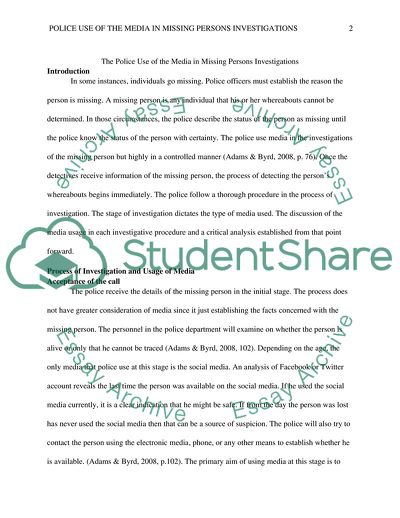Cite this document
(The Police Use of the Media in Missing Persons Investigations Essay, n.d.)
The Police Use of the Media in Missing Persons Investigations Essay. https://studentshare.org/media/1871068-missing-person
The Police Use of the Media in Missing Persons Investigations Essay. https://studentshare.org/media/1871068-missing-person
(The Police Use of the Media in Missing Persons Investigations Essay)
The Police Use of the Media in Missing Persons Investigations Essay. https://studentshare.org/media/1871068-missing-person.
The Police Use of the Media in Missing Persons Investigations Essay. https://studentshare.org/media/1871068-missing-person.
“The Police Use of the Media in Missing Persons Investigations Essay”. https://studentshare.org/media/1871068-missing-person.


